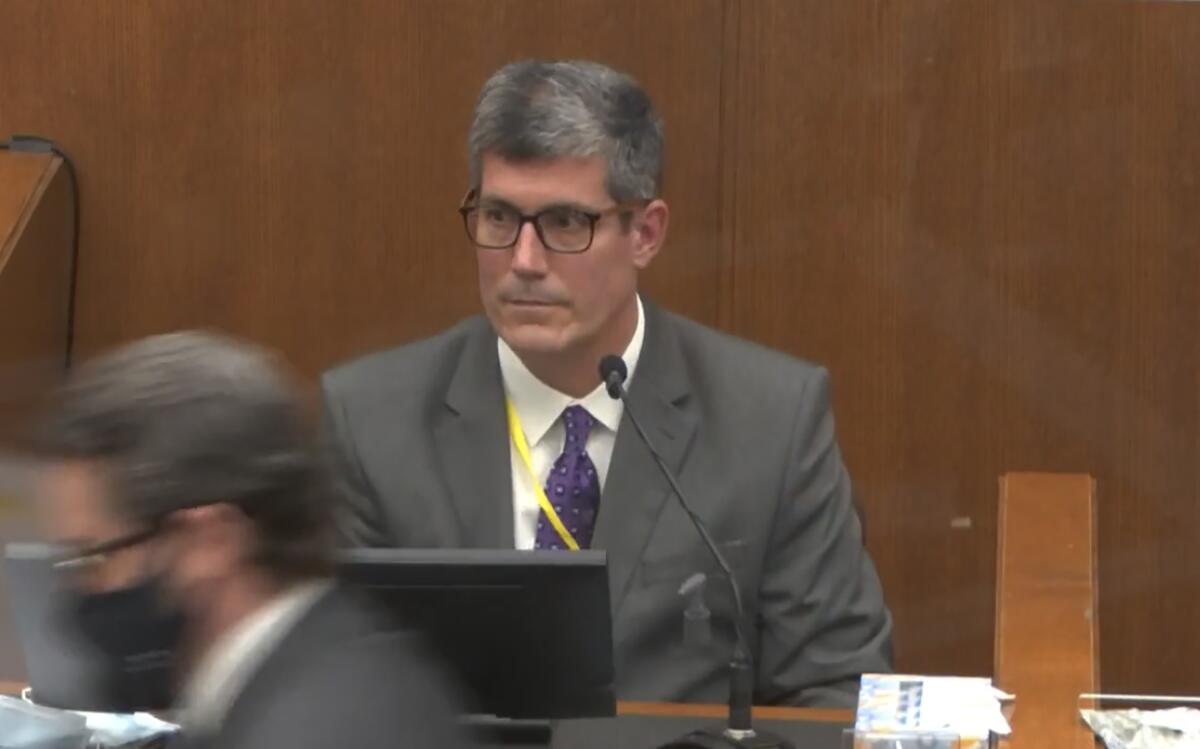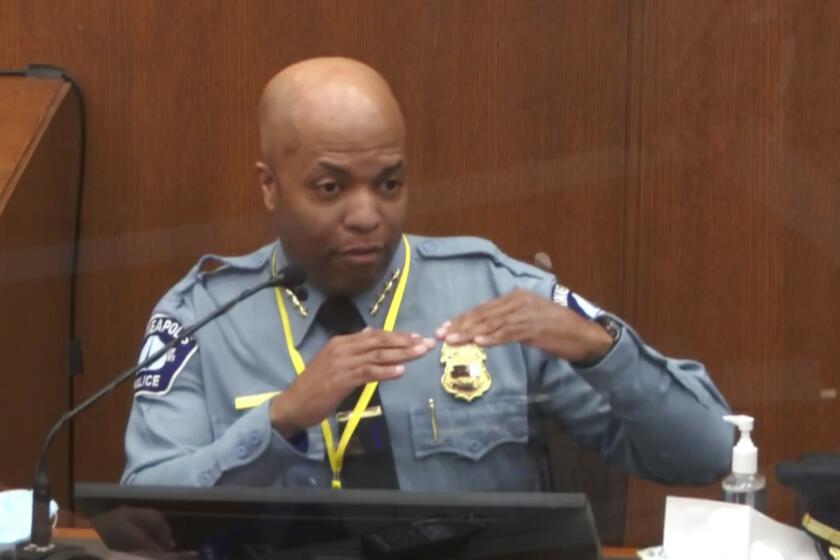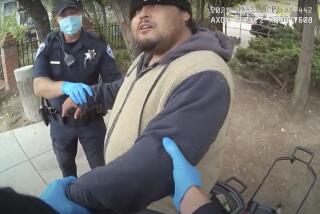Medical examiner who ruled George Floydâs death a homicide points to altercation with police

MINNEAPOLIS â The medical examiner who performed an autopsy on George Floyd and ruled his death a homicide testified Friday that the force used by Minneapolis police, including neck compression, was too much for Floyd in part because of underlying heart problems.
âIn my opinion, the law enforcement subdual restraint and the neck compression was just more than Mr. Floyd could take by virtue of those heart conditions,â said Dr. Andrew Baker, the Hennepin County medical examiner.
Baker, who was called by prosecutors in the murder trial of former Minneapolis Officer Derek Chauvin, said on several occasions that stress from the police use of force, not heart disease and drugs, was the main cause of death.
âThose events are going to cause stress hormones to pour out into your body, specifically things like adrenaline. And what that adrenaline is going to do is itâs going to ask your heart to beat faster,â Baker said. âItâs going to ask your body for more oxygen so that you can get through that altercation.â
In June, Baker identified the cause of Floydâs death May 25 as âcardiopulmonary arrestâ that occurred during âlaw enforcement subdual, restraint, and neck compression.â
Chauvinâs defense has argued that Floyd died of cardiac arrest brought on by drug use and various chronic health problems â not as a result of the former officer kneeling on his neck for more than nine minutes.
Bakerâs much anticipated testimony Friday also revealed that he found bruising and abrasions on the left side of Floydâs face.
âThese would be entirely consistent with the left side of his face being pinned against the asphalt or road surface he was on the night before,â Baker said.
Baker said that although the toxicology screen of Floydâs blood found methamphetamine and fentanyl, he concluded the drugs were not a direct cause of Floydâs death.
He explained that the drugs found in Floydâs system were part of the âsignificant conditionsâ assessment of the death certificate, meaning they played a role in his death but were not direct causes.
Before Baker performed the autopsy of Floyd, video of the incident in south Minneapolis spread around the country, igniting protests against police brutality. Because of the intense media attention, Baker said, he did not watch the video of Floydâs final moments before he conducted the autopsy.
âI was aware at least one video had gone viral on the internet. But I intentionally chose not to look at that until I had examined Mr. Floyd. I did not want to bias my exam by going in with preconceived notions that might lead me down one pathway or another,â Baker said.
The testimony from Baker came a day after medical experts testified that Floyd died of a lack of oxygen from being pinned to the pavement with a knee on his neck. In his autopsy report, Baker did not list lack of oxygen or asphyxia as a cause of death.
In questioning Baker, Eric Nelson, Chauvinâs defense attorney, further asked whether the placement of Chauvinâs knee would âanatomicallyâ cut off Floydâs airway.
âIn my opinion it would not,â Baker responded, but he noted that he is not an expert in video observations.
Earlier Friday, prosecutors called retired Hennepin County Medical Examiner Lindsey Thomas to testify. She agreed with Bakerâs listing of Floydâs cause of death, saying âthe primary mechanism of death is asphyxia, or low oxygen.â
The Minneapolis police chief was less emotional than many other witnesses in the George Floyd trial. But his point was the same: Derek Chauvin used excessive force.
âThis is a death where both the heart and lungs stopped working. The point is, itâs due to law enforcement subdual, restraint and compression,â Thomas said. âThe activities of the law enforcement officers resulted in Mr. Floydâs death.â
Chauvin faces murder and manslaughter charges.
The proceedings Friday in downtown Minneapolis concluded the second full week of testimony by witnesses called by the prosecution. Pool reports from reporters inside the courtroom portray a panel of jurors taking diligent notes. Most days a Floyd family member is present in the courtroom.
Several police officers, including Minneapolis Police Chief Medaria Arradondo, took the stand this week, calling the actions of Chauvin out of line with department policy.
âOnce Mr. Floyd had stopped resisting, and certainly once he was in distress and trying to verbalize that, that should have stopped,â Arradondo told jurors.
More to Read
Sign up for Essential California
The most important California stories and recommendations in your inbox every morning.
You may occasionally receive promotional content from the Los Angeles Times.












